You have just read the title to this blog and you’re thinking ‘Whoa, Wagner is way off base with this one!’
PL-EASE … Allow me to explain.
Now that spring has sprung, some of the more prolific, more accessible wild edible foods will soon begin to make their initial appearances … in your yard! No kidding!
This is the time of year when when edible wild plants emerge and they are their most tender, tastiest stage.
Know that your own yard, acreage, field edge, garden, landscape beds, vacant lot, alleyway or patch of woods or prairie, could very well be the closest and most productive spot that you’ll find to forage. Interestingly, I heard an ecologist once say: “Eating local doesn’t just mean eating food that was grown and raised here, but also discovering and sourcing the foods that actually belong here!”
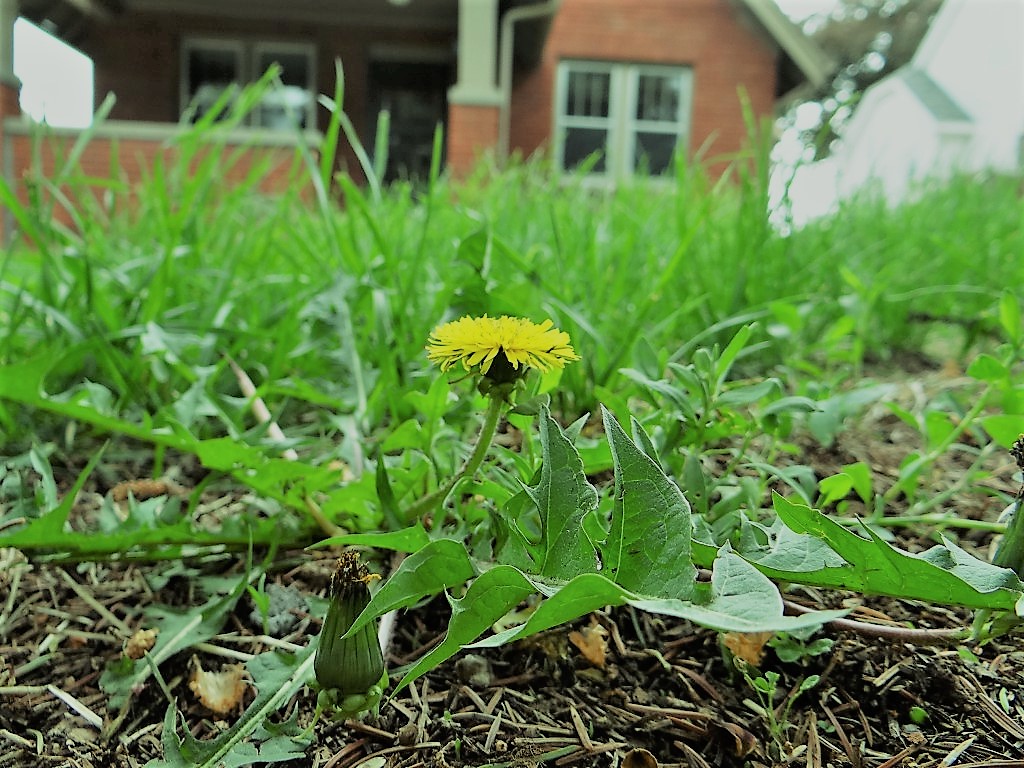
In addition to the positive health benefits of being outside, picking local, nutritious, wild edible plants can save you time in the supermarket shopping and even a bit of grocery money!
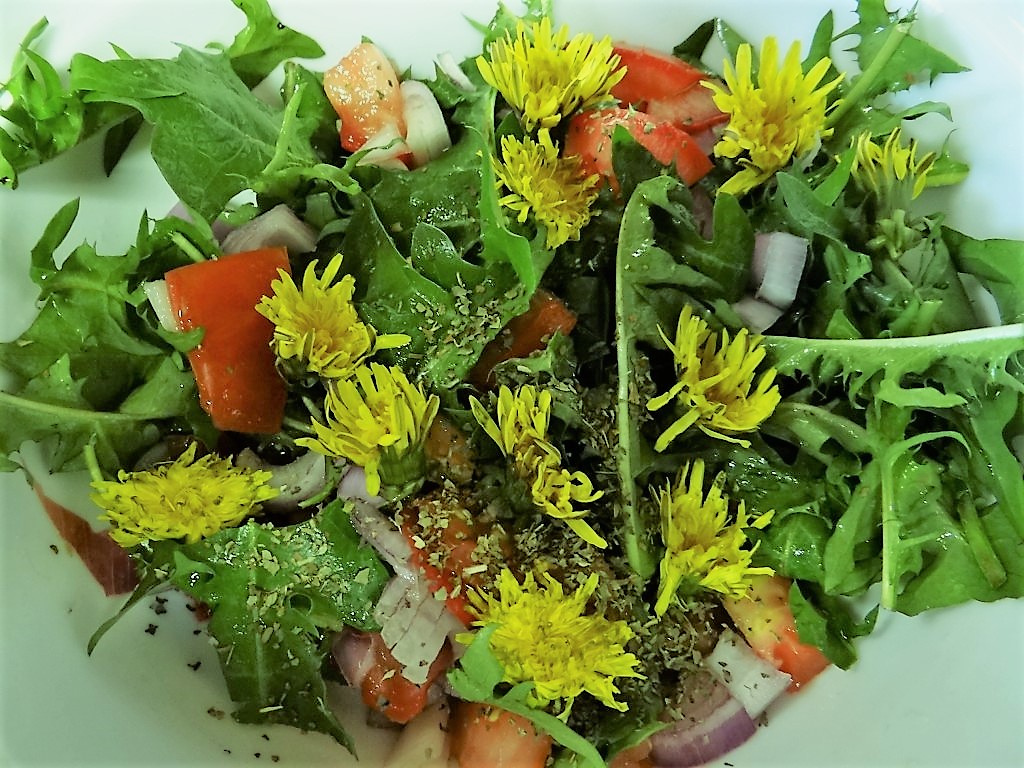
I like what Bob Henrickson, Assistant Director of Horticulture Programs for the Nebraska Statewide Arborteum at the University of Nebraska-Lincoln, says about foraging in your yard. He states: “Some of the weeds we’re digging out of lawns and landscape beds can be harvested for eating. It’s hard to get fresher or more local than the walk from lawn to table.”
So, do you know any edible wild plants growing around your yard? Well, here are several of the more recognizable specimens (yes, many of these are considered weeds) that may be accessible just off the back doorstep. Check ’em out!
Common Dandelion. No question the common dandelion has to be the easiest wild edible to both find and identify. Most of us know them from our childhood, and their bright yellow color makes them easy to spot. The common dandelion (Taraxacum officinale) grows virtually everywhere! The dandelion, native to Europe and Asia, was originally imported to North America as a food crop. It is a common colonizer of disturbed habitats, both from wind blown seeds and seed germination from its seed bank. They are full of nutrition, and some call them “super foods!” Every part of the plant is edible, though some parts are tastier than others. The root, especially, is very bitter and rarely used. The greens tend to be bitter, but in the springtime, the younger, more tender leaves seem to be much less so that the mature summer leaves. Mix them with other greens raw in a salad after rinsing with clean water. Probably everyone’s favorite part of the dandelion is the flower–which is at it’s peak in April and May. As long as the area has not been sprayed with hazardous chemicals, a flower can be picked and eaten right from the plant itself! The dandelion flower is, of course, much sweeter than the greens, just make sure to remove the green “base” during harvest which is very bitter, and consume only the yellow portion of it.
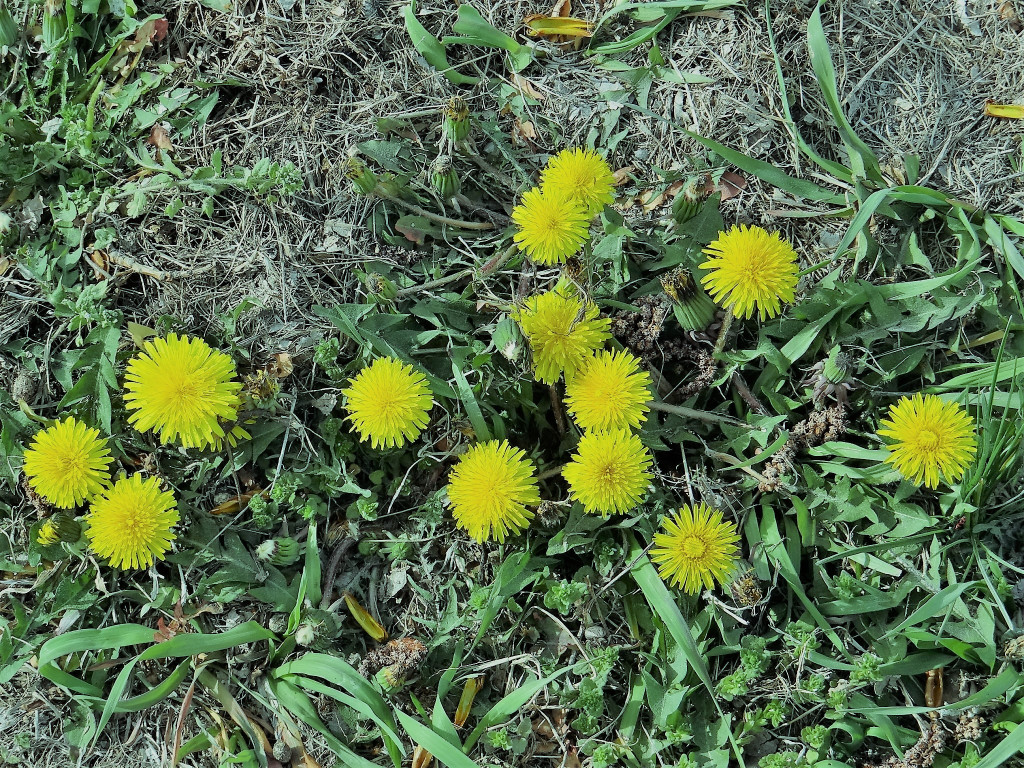
Ground Ivy (or gill-over- the-ground). A member of the mint family growing in moist, shady areas, ground ivy or gill-over-the-ground, it has sort of scalloped-like leaves about the size of a house cat’s paw (hence another nickname “Catsfoot”) with purple or blue flowers. With its uniquely square stems, the aromatic ground ivy was introduced to North America by European settlers. In present-day the perennial plant (Glechoma hederacea) is cussed by homeowners and lawn care professionals because of its aggressive, low-growing, difficult-to-control nature. Ground ivy is considered a lawn invader but it should definitely not be overlooked for its culinary uses. Back in the 16th century, ground ivy was utilized to clarify, flavor and preserve beer and served as a cure for inflammation, tinnitus and congestion. Today folks include it in making soups, salads and teas. Nevertheless, be forewarned, ground ivy leaves possess a strong, pungent flavor so don’t over use it. A few leaves sprinkled in a salad though can offer a nice, earthy, somewhat minty, peppery punch. Younger, smaller leaves are the most palatable.
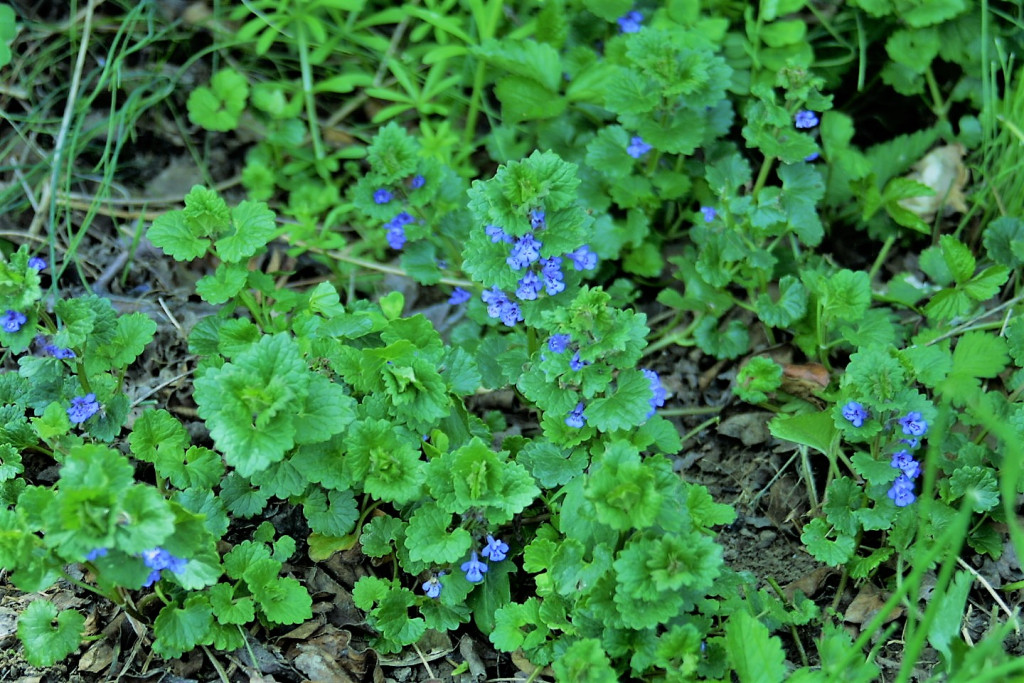
Stinging Nettle. The stinging or common nettle (Urtica dioica) grows widespread in Nebraska. The plant is particularly found as an understory in wetter environments like moister woodlands, but it is also found in meadows. The stinging nettle is loaded with nutrition possessing some 17 essential vitamins and minerals. It can be a staple for a spring wild edible harvest. Seriously! Get the nettles while they are young or cut off the top four to five inches of the plants. For harvesting nettles, it is advised to wear a long-sleeved shirt as well as long pants, shoes and socks, plus put on protective rubber gloves. Proceed slowly and carefully in the collection process. Once home, a quick, effective parboil neutralizes and dissolves the stinging hairs of the plant and renders them harmless. The stinging nettle tastes somewhat like kale. You can freeze them for use throughout the year and put up lots of nettle pesto, which is great for a quick and healthy version of mac ’n’ cheese!” These also make for a good salad or inclusion in a stir fry dry dish with a little peppery zing.
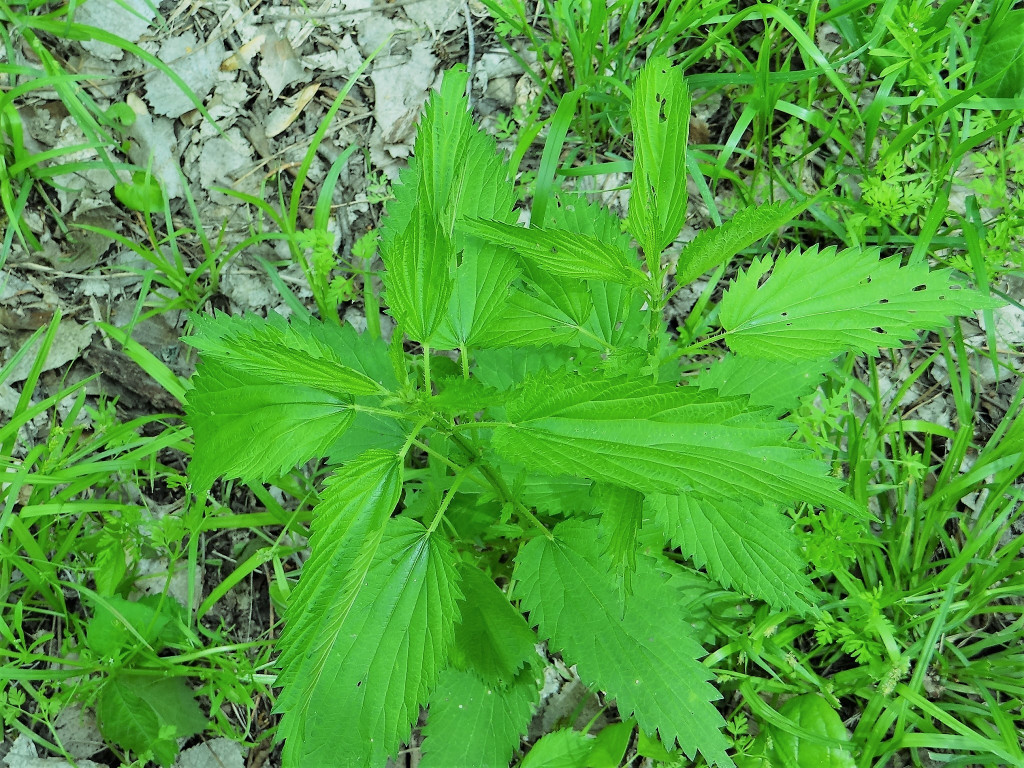
Lambsquarter (or Lamb’s Quarter). This is a common, prolific wild plant of neglected gardens and sunny fields. In the springtime, the entire plant is tender and delicious. Due to the somewhat waxy/powdery looking coating on their leaves and their salty taste, it is suggested to cook the lambsquarter leaves. Once done and cooled, they make a delicious substitute for spinach in any dish. Long time Lincoln, NE naturalist Kay Young in her book Wild Seasons has an appealing recipe for creamed lambsquarters with mushrooms. If you’re curious, that whitish dust present on each leaf is made up of mineral salts from the soil and is an indication of mineral-rich value. The leaves are flush with Vitamins A and C as well as containing good amounts of calcium, riboflavin, niacin, thiamine, manganese and potassium. This plant is thought of as an undesirable weed, but it has been eaten throughout human history. Lambsquarter (Chenopodium album) is a close relative of quinoa which tastes strongly of spinach and is still cultivated in Mexico today. There are several explanations of the origin of the lambsquarter’s name. One hypothesis is that the shape of the leaf is reminiscent of a cut of lamb meat, the quarter.
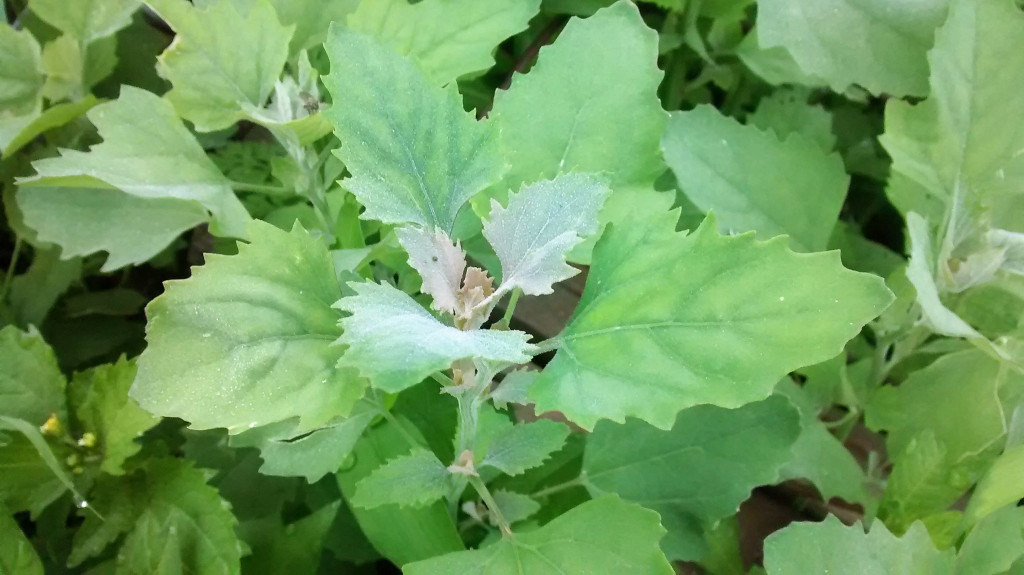
Curly Dock. The young tender leaves of this plant (Rumex crispus) are tart but can be used in a salad as a wild leaf vegetable. They have a slightly acidic taste, a little like wood sorrel, with only a trace of astringency. The young leaves should be boiled in several changes of water to remove as much of the oxalic acid in the leaves as possible or can be added directly to salads in moderate amounts. Some folks blanch or sauté the leaves and even freeze batches of them to last through the winter months. I have read that well known folklorist and humorist, Roger Welsch, who wrote Weed ‘Em and Reap, is a fan of curly dock. Welsch suggests boiling or steaming the young leaves, adding fresh lemon juice, bacon grease or butter and salt for a “first rate, and very wholesome, vegetable green to go along with your T-bone steak.” Curly dock, with its leaves high in beta-carotene, Vitamin C, and zinc, became an important vegetable during the Great Depression, when people were hungry. It is said that the juice of curly dock can counteract the effect of stinging nettles on the skin. Habitats of the curly dock include many areas such as seeps, glades, weedy meadows (including areas prone to occasional flooding), pastures and fallow fields, vacant lots, roadside banks, graveled areas near railroad tracks, edges of yards and gardens. Disturbed areas of soil are preferred by the plant.
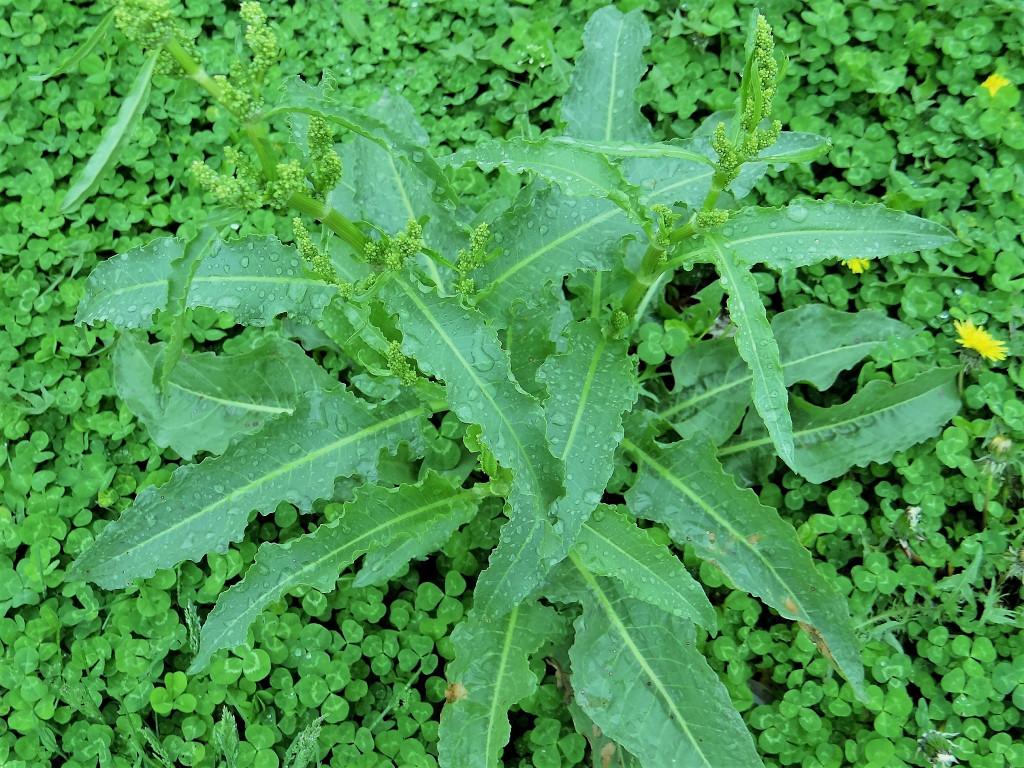
Wild Violet. Viola pratincola, is a cool season, perennial, broad leaf plant or weed. It is one of the first plants to flower in spring, growing well during cool parts of the growing season, and is typically found in sun-shaded or shaded moist areas with rich, well-drained soil. They may spread into sunny areas. This is one of the more common violets in the woodlands of eastern Nebraska from late April through May. But many folks don’t realize that they are edible! The tender, young leaves can be used raw in salads in combination with other greens to spice it up. The young wild violet leaves have sort of a slight peppery taste to them. They can also be cooked like spinach, combining them with wild onions and garlic mustard leaves to add a flavorful zest. The flowers are edible as well and adding these vivid floral heads — along with redbud blossoms, dandelion heads, and mustard flower buds to a salad — adds a nice, colorful purple/blue touch with a sweet, mild favor. Wild violet flowers can also be placed atop elaborate desserts to enhance their look.
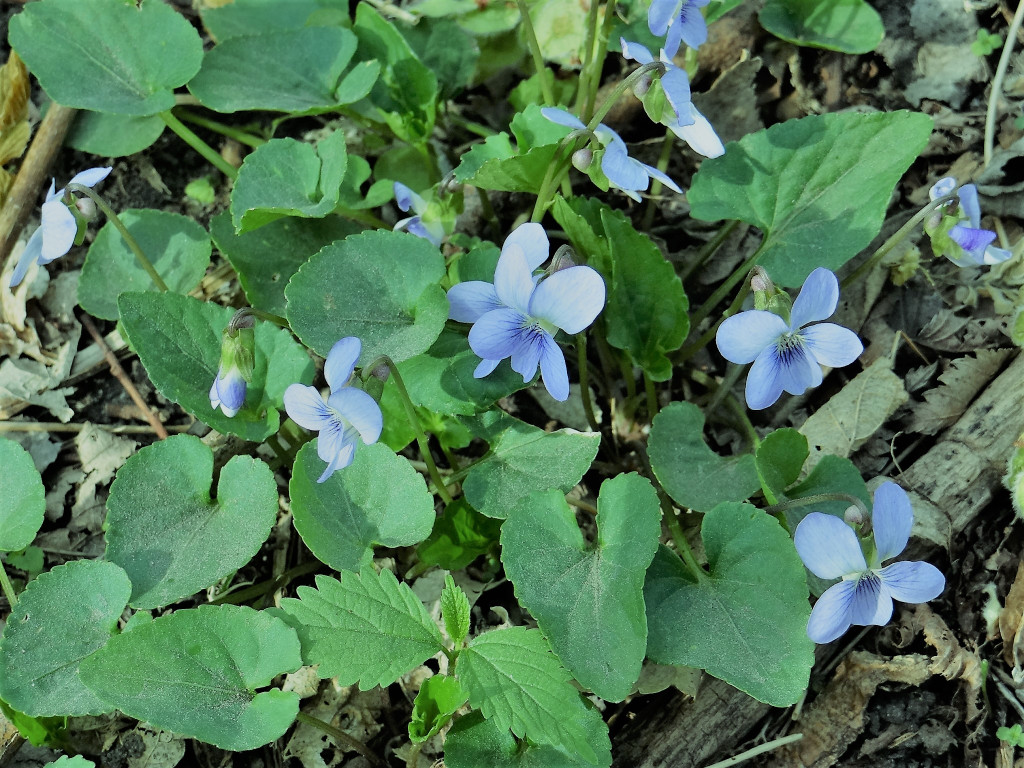
Purslane. Purslane is an annual, succulent plant. The shiny, oval, fleshy leaves grow almost opposite of each other. Purslane stems usually have a reddish tint to them and tiny yellow flowers that form at the ends of the branches. This plant typically lays flat with stems radiating out from a central point. A group of these plants can form a kind of a thick fleshy mat. You may have seen purslane growing in the cracks of your rock garden but may not have realized it was edible! So do not just pull it and throw it in the yard waste bin. This is a very tasty, nutritious wild plant. Purslane or Portulaca oleracea is high in Omega-3 fatty acids, iron and vitamin A. Thus, tossing it out would be almost like tossing out a bottle of fish oil supplements! How does it taste? Purslane is slightly sour with a lemony, peppery hint to it. It would be rated sweet but somewhat acidic. When munching on it, know that it is a succulent and the leaves are crisp. You can cook it, eat it raw or pickle if you want. While purslane tends to grow abundantly in the cracks of your retaining walls, driveways and sidewalks, these are not among the cleanest of places. When foraging for this edible plant, stick to your backyard or rock garden instead.
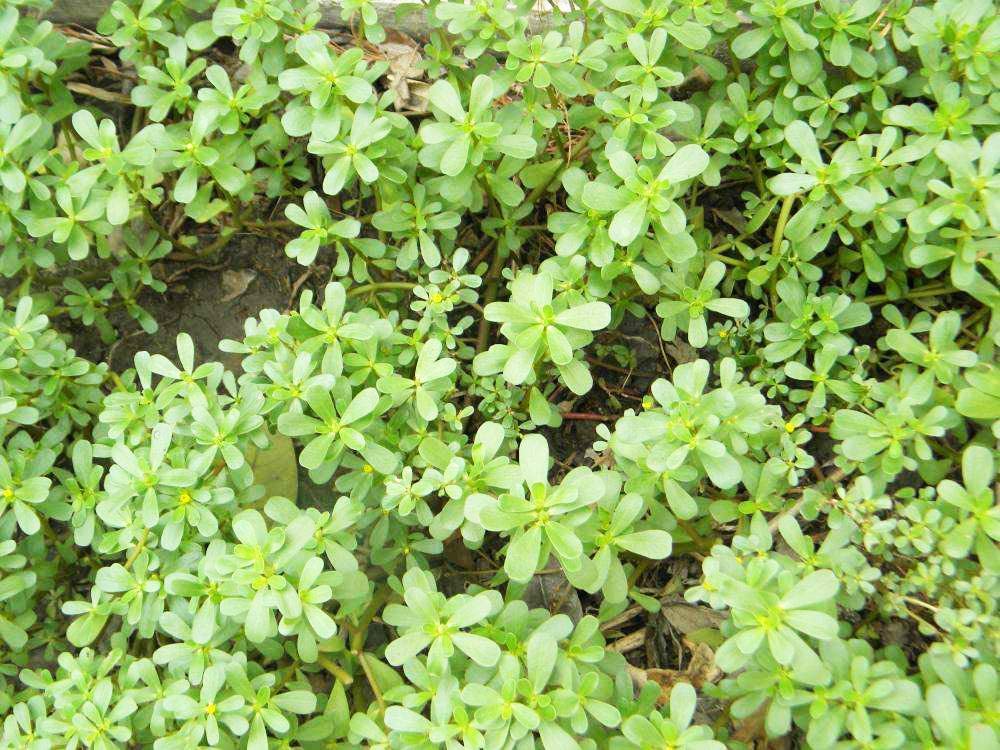
Plantain. One of the more common and abundant of the edible urban wild plants is a weed known as broadleaf plantain (Plantago major). There are actually three species of plaintain in Nebraska: Broadleaf plantain (Plantago major) and buckhorn plantain (Plantago lanceolata) that are also considered common weeds. The blackseed plantain (Plantago fugelli) is a native plant to Nebraska and was used by Native American tribes, while the others were introduced from Europe by settlers. Plantain is a broadleaf plant whose leaves emerge from a basal rosette. The leaf shape is reminiscent of spinach leaves. Although plantain is a dicot, the veins are more parallel than netted. Plantain comes from a French word meaning sole of the foot. Nutritionally, plantain is pretty amazing. Akin to spinach, plantain leaves are rich in iron and vitamins A and C. Plantain may be eaten uncooked, but the adult leaves can be stringy, and seedpods tend to be a bit tough. Preparation with plantain is as simple as boiling washed plants until tender, then serving the leaves as you would spinach, or the seedpods as you would green beans or asparagus. A little apple cider vinegar greatly helps to boost the flavor of the cooked leaves. Serve them hot with butter, salt and pepper. Seedpods are good in stews, soups and stir-fries, or with melted cheese over them.
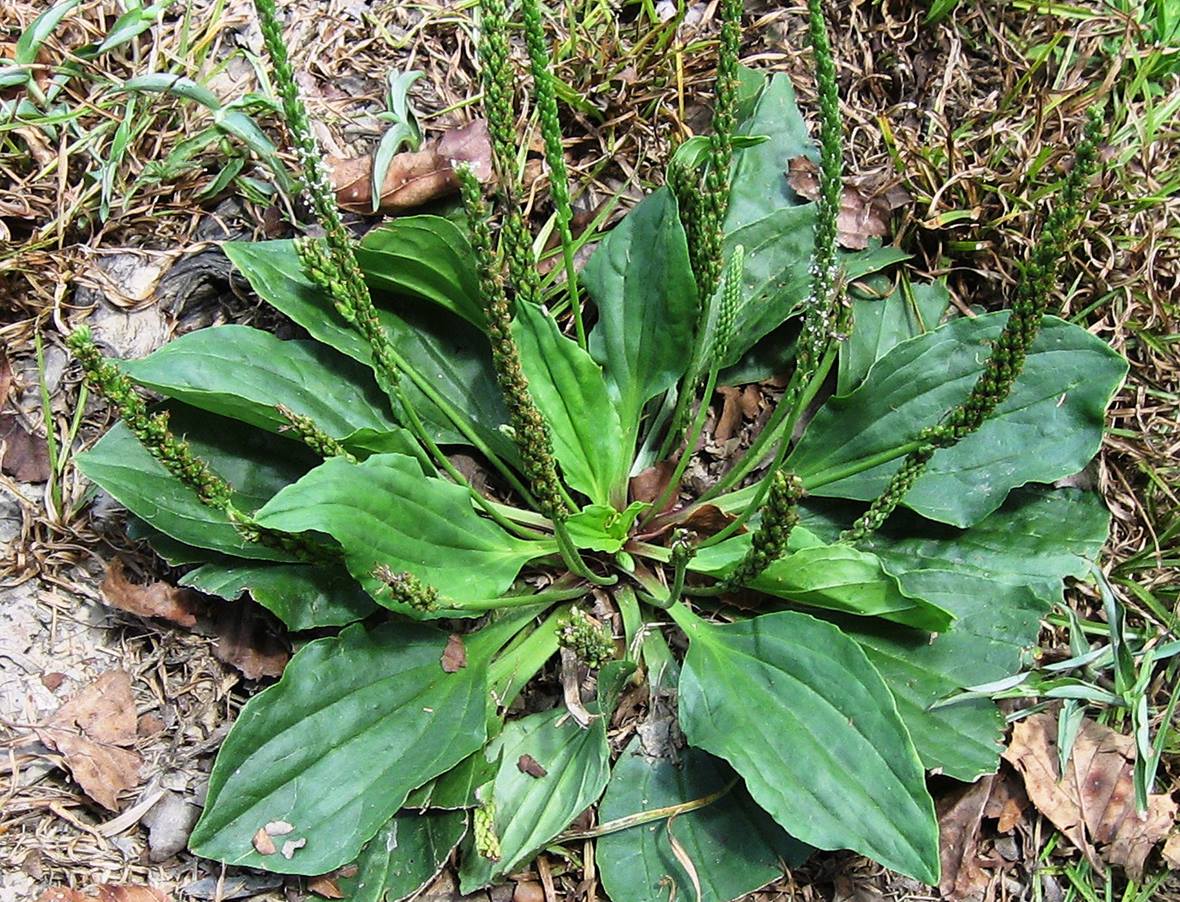
DISCLAIMER
The location of the plant is also an important factor. Plants near roadways or parking lots are often coated with pollution such as vehicle exhaust residue or harmful chemicals (pesticides, herbicides and other biocides or fertilizers), while plants adjacent to farm fields could be infected with unhealthy levels of agricultural chemicals. Make certain the yard you want to forage has not been sprayed or treated with hazardous substances to humans. Beware of plants near waterways, as microscopic parasites could have been washed onto them. You should always take the necessary precautions before eating a wild plant. At a minimum, thoroughly rinse it in clean water, and boil it to kill any possible bacteria or oxalates. Also, if any plants smell of almonds, do not eat them! They are almost always poisonous in the wild!
Furthermore, it is recommended that an individual try just a small amount of a wild plant to start, and if everything goes well, a slightly larger amount may be consumed. Then, wait 24 hours before eating more quantities, just to be on the safe side.
Have fun, enjoy the adventure but be responsible! Research laws/regulations for harvesting plants on any given tract of land, get landowner permission to collect wild edibles on any property besides your own, and respect nature by not over-harvesting certain plant life and removing/recycling any litter found!

Your blogger enjoying fresh dandelion salad! Photo by Polly Wagner of Omaha, NE.
*BLOGGER’S NOTE: I am a forager. Forget some of the stigmas associated with that. There is just something innately special about gathering wild edible plants or parts thereof, even in your own backyard. I think it spurs a hunter-gatherer gene that is ingrained in all of us. I believe foraging is one of the absolute best ways to experience and really get to know nature. I encourage you to learn more and try it! GW.
“A weed is a plant whose virtues have not yet been discovered.” – Ralph Waldo Emerson.
The post The Plants Growing In Your Yard That You Can Eat (No Kidding!) appeared first on Nebraskaland Magazine.
















